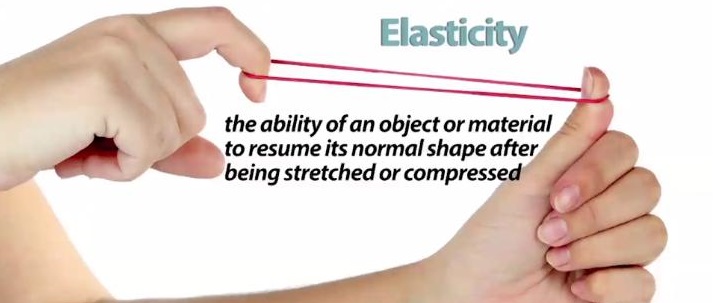Elastic Behaviors
In Abaqus, elastic material behavior describes how a material deforms under load and returns to its original shape when the load is removed. Elasticity is a fundamental material property, and Abaqus provides several ways to model different types of elastic behavior:
Linear elasticity (Isotropic)
Linear elasticity is the simplest form of elasticity available in Abaqus. The linear elastic model can define isotropic, orthotropic, or anisotropic material behavior and is valid for small elastic strains.
Models materials that obey Hooke’s law, where stress is linearly proportional to strain (small deformations).
A linear elastic material model:
- is valid for small elastic strains (normally less than 5%);
- can be isotropic, orthotropic, or fully anisotropic;
- can have properties that depend on temperature and/or other field variables; and
- can be defined with a distribution for solid continuum elements in Abaqus/Standard.
The simplest form of linear elasticity is the isotropic case, and the stress-strain relationship is given by:
Abaqus/CAE Usage:Property module>> material editor>> Mechanical>> Elasticity>> Elastic, Type: Isotropic

Orthotropic materials
A material is orthotropic if its mechanical or thermal properties are unique and independent in three mutually perpendicular directions. orthotropic materials can be characterized by nine material constants.
- Material has different elastic properties in three orthogonal directions.
- Requires 9 independent elastic constants (3 Young’s moduli, 3 Poisson’s ratios, and 3 shear moduli).
- Common in composite materials, wood, or rolled metals.


Anisotropic Elasticity
There are many materials which, although well modelled using the linear elastic model, are not nearly isotropic. Examples are wood, composite materials and many biological materials. The mechanical properties of these materials differ in different directions. Materials with this direction dependence are called anisotropic.
Hyperelastic (Nonlinear Elasticity)
Hyperelastic models can be quite useful for predicting the behavior of rubber-like polymers. The main strengths of hyperelastic models include:
• Easy to use and calibrate.
• Accessible in major commercial FE codes.
• Computationally efficient.
Hyperelasticity describes the nonlinear elastic response of rubbers and elastomers, found in many practical applications.
Models incompressible or nearly incompressible rubber-like materials undergoing large elastic deformations (e.g., elastomers). Stress is derived from a strain energy potential.

Porous Elastic Materials
The Abaqus porous elastic material model is convenient for modeling materials that consist of a solid skeleton with pore spaces filled with fluid, such as:
Geomaterials (soil, concrete, rock)
Body tissues (bone, cartilage)
Foams & sponges (open-cell foams, filters)
This model relates solid motion to fluid flow. It is useful for the study of consolidation, seepage, and fluid-structure interaction (FSI) problems.
A porous elastic material model:
- is valid for small elastic strains (normally less than 5%);
- is a nonlinear, isotropic elasticity model in which the pressure stress varies as an exponential function of volumetric strain;
- allows a zero or nonzero elastic tensile stress limit; and
- can have properties that depend on temperature and other field variables.
Viscoelastic materials
Viscoelasticity is the property of materials that exhibit both viscous and elastic characteristics when undergoing deformation. Synthetic polymers, wood, and human tissue, as well as metals at high temperature, display significant viscoelastic effects. In some applications, even a small viscoelastic response can be significant.
There are many materials that exhibit viscoelastic properties, ranging from natural biological structures such as tissue, cartilage, and skin, to synthetic polymers and concrete. Being viscoelastic means that the material to some extent both behaves like a liquid and a solid material and that it has a time-dependent strain.
read more about : The Difference Between Elastic Materials and Viscoelastic Materials









